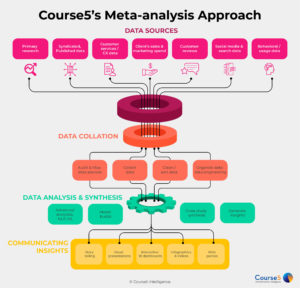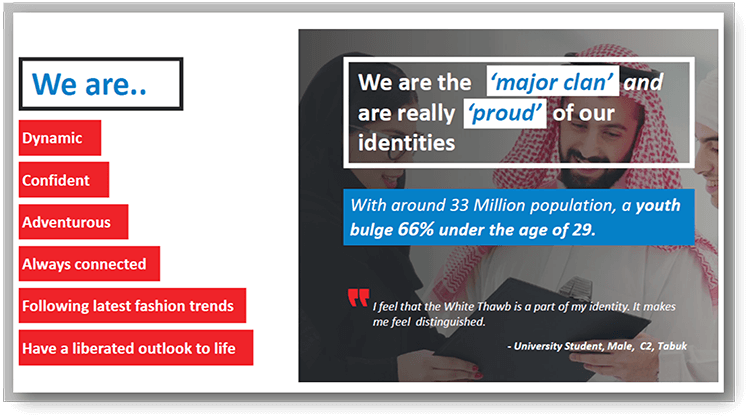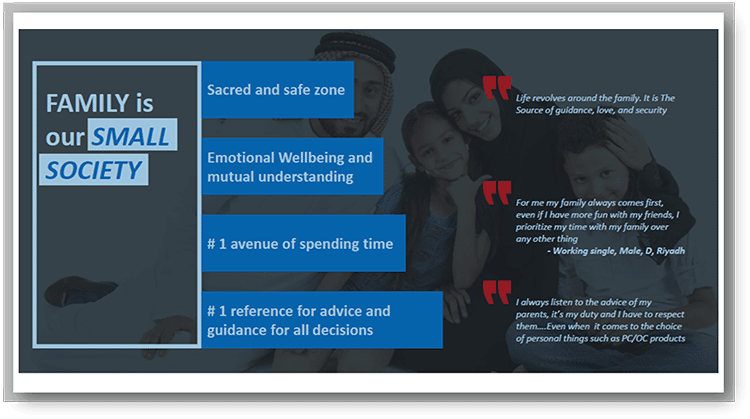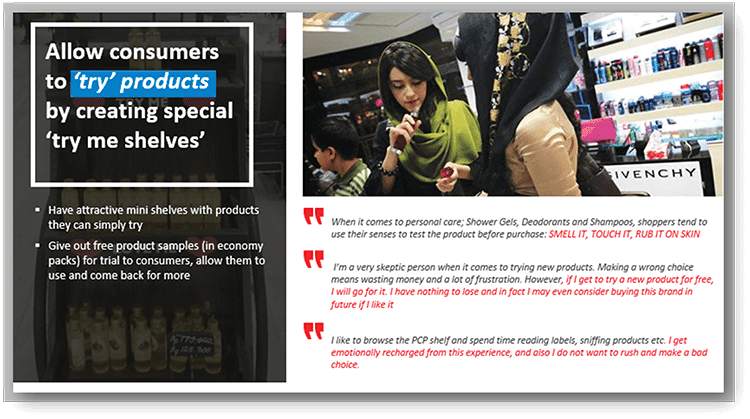Consumer Insights: Types and Use Cases for Impactful Brand Decisions
Micro businesses like grocery and vegetable shops and large companies with more than 250 employees share one attribute in common. They work on the scaffolding of consumer insights to maximize customer satisfaction. However, only a few companies truly understand the right way of gathering and leveraging these insights. You may be collecting a vast library of data. But, converting this data into information (an organized data set that helps decision-making) is a complex task.
This article aims to illustrate how to make the most of consumer insights and the most profitable ways to gather them.
What are Consumer Insights?
Consumer insight is information a business derives from its audience’s quantitative and qualitative data. This data gives a deeper understanding of what customers want and how they interact with your business. It helps companies understand customer psychology and consumer preferences, and identify behavioral patterns to improve their products and services.
This valuable knowledge gives companies a solid foundation for deciding how to serve their customers better and what goals to strive for.
Importance of Consumer Insights
Every company claims to put customers first, but not all act upon it. Taking consumer intelligence seriously can make your business truly customer-centric.
These insights help businesses to make informed decisions and implement effective marketing, sales, and other initiatives. This way, they are not left shooting in the dark and can efficiently utilize their resources. These valuable insights provide in-depth information about existing and potential customers and allow companies to develop products and services that resonate with their target audience. This, in turn, improves the quality of services offered by businesses and refines the overall customer experience.
Since the insights help you to understand what your customers want from you, brands can use the knowledge to enhance customer satisfaction and retention and also build their reputation by addressing customer pain points. Thus, consumer insight is a powerful tool that brands can leverage to uncover areas of improvement and make more data-driven decisions.
Difference between Market Research and Consumer Insights
Market research collects data about customer needs, size, competitors, and target audience. The research is done to understand the market and to see how well your product or service resonates among different buyer groups. Market research is quantitative and pertains to the wider market.
On the other hand, customer insights focus specifically on customers and understanding how they interact with your business. These insights are valuable pieces of information that are actionable.
Consumer insights are, thus, a subset of market research.
Types of Consumer Intelligence
There are several types of consumer insights. Different types of data need to be collected to obtain those useful insights.
Let’s have a look at the most important sources of customer insights.
- Firmographic Data –
This data provides information about the firms using your products or services. This is more relevant in the case of B2B companies that can use firmographic data such as the size, location, and sector of the client companies.
- Usage Data –
Usage data typically includes information on how consumers use your product or service. For example, it can provide data on whether customers use your product monthly or weekly.
- Customer Loyalty Information –
Customer loyalty can be primarily measured using the Net Promoter Score (NPS). The score indicates how likely customers are to recommend your brand to others. This data shows how happy and satisfied people are with your products or services.
- Customer Service Data –
This data reveals the quality of your customer service. It gives information regarding customer interactions with your support representatives. What are the common customer queries? What is it they’re unable to understand or are disappointed with?
- Competitor Data –
This data provides information about how your competitors do business and what can be done to make your product stand out.
How to acquire Consumer Insights?
Let’s understand the different ways to collect data for deriving insights into consumers, and understanding consumer perceptions.
Two approaches can be adopted for active and passive data collection.
The active approach usually includes the following methods:
- Survey campaigns: This is the most common method of collecting customer data. It entails distributing survey forms directly to the customers to collect data about them.
- Interviews, chats, and customer support recap: Directly chatting or interviewing the consumers is a great way to know what you’re doing right and what changes they would like you to bring. These post-purchase interactions are beneficial and can provide valuable insights.
Passive data collection methods include:
- Parsing online reviews: Today’s customers consider online reviews before purchasing. The review industry has come a long way. Most customers share their feedback on their purchase experience. Gather these reviews about your business, derive data from them, and analyze the data. This can provide you with actionable insights.
- Monitoring website analytics: To provide an amazing customer experience, you need to know where customers are having issues with your website. Many software CX solutions, such as Hotjar, allow you to monitor where visitors click the most on each site page. This information can prove to be immensely useful for improving the customer journey.
- Social media input: Most of your target audience is on social media. Identify the social media platforms your existing and potential customers spend the most time on. Gather user behavior data from these platforms and translate them into actionable insights.
Other than the above-discussed approaches, there are some other reliable methods too:
- Third-party data: If you don’t have much data about your customers, you can rely on the market research done by larger organizations. This way, you can understand the customer trends in your industry and the common problems customers face.
- Predictive models: The big advances in machine learning and AI technology have led to predictive modeling. Predictive models allow for the analysis of large volumes of data, which can be used to predict customer behavior.
How to use Consumer Insights?
To leverage the data you’ve gathered, you need to put the insights to correct use.
Here’s how businesses can use customer insights to their advantage.
- Improved products and services
Customer insights are commonly used to help companies improve their products and services. They know what features to add or remove and how to enhance the overall customer experience. - Personalized messaging
The insights can offer in-depth information about specific customer segments and their buying behaviors and preferences. This can help you implement more targeted marketing strategies and personalized product recommendations. - Reduced churn
Insights on consumers can help reduce churn, retain customers, and build brand loyalty. This results in long-term profits and an enhanced brand reputation. - Improved customer service
Nowadays, customers have more expectations from businesses than ever before. The insights allow you to serve your customers better and meet their expectations. - Streamline the customer journey
Consumer data enables you to understand what turns customers away during their buying journey. By analyzing this data, you can optimize the customer journey and provide a more streamlined experience.
Course5’s approach to Consumer Insights
We, at Course5, leverage a meta-analysis approach where data is collated from multiple sources and is then analyzed before insights are communicated to the client company.
Data is collected from varied sources ranging from primary research, syndicated data, and CX data, to customer reviews, sales and marketing data, and social media data. The collected data is then audited and mapped according to its sources, cleaned to maintain data quality, and organized for data engineering activities.
To generate insights from the collated data, we employ cross-study synthesis, build models, and leverage Advanced Analytics, Natural Language Processing (NLP), and Machine Learning. AI-powered analytics solutions help to break down the data and identify key consumer insights that influence the business.
The insights are actionable in real-time and are communicated to the client through interactive BI dashboards, and visual presentations through infographics, graphs, and videos. Our consumer insights solution promotes easier insight consumption through smart story-telling and enables decision-makers to be more proactive at taking action.
A Consumer Insights Case Study
A multi-national CPG company wanted to have a deeper understanding of the culture, lifestyle, and religion in the Kingdom of Saudi Arabia. The country has been through a massive cultural revolution and presents huge market potential which the client wanted to capitalize on.
An external agency had performed a study and offered the client a massive report on their findings. But the decision-makers within the client’s business were having difficulties accessing insights from the report and take strategic decisions. The client also wanted to compile recent learnings into the existing data, to present a holistic view of their target market.
This is where Course5 stepped in with its competitive market intelligence solution. We helped deconstruct the data, making the insights easy to consume and base decisions on.
Course5 extracted insights from the qualitative study performed a couple of years prior and simplified the extensive report. Secondary and syndicated research was conducted to fill in the gaps, update the findings, and account for the time elapsed since the previous report. The updated report included insights on Saudi values, culture, socio-economic conditions, shoppers and product recommendations, product packaging, and client communication with Saudi millennials.
The report was presented to the client’s marketing, creative, and insights team heads, who handle all the business for the Saudi region. The consumer insights were able to help the client construct suitable advertisements and launch marketing initiatives to not just increase penetration of current markets, but drive product innovation and development for the company’s future in the Saudi market.
Consumer insights lead to data-driven decision-making. These insights can act as a growth roadmap as they can inform on various aspects of the business. All you have to do is listen to your customers; their insights will drive your business to success.
Don’t miss our next article!
Sign up to get the latest perspectives on analytics, insights, and AI.









